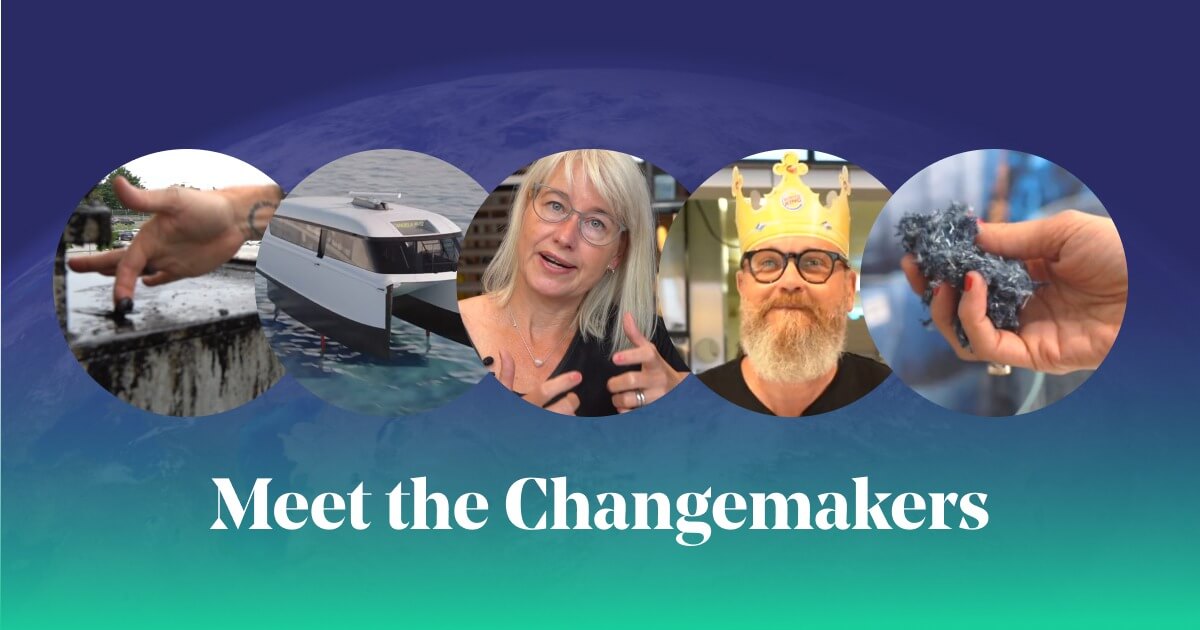Article
Enjay Systems
26 w
From (Burger King) Fast Food to Large Industry: Enjay’s solution has the potential to cut global emissions by 1%
In collaboration with We Don’t Have Time, Enjay was chosen to feature in a Changemaker video. With these videos, We Don’t Have Time wants to spread outstanding examples on innovative solutions that can make a big impact in the transition to a low carbon world.
Our Changemakers’ video showcases how our proprietary heat exchange technology works, and how at scale it could be used to cut global emissions by 1%.
From humble beginnings in a Burger King franchise in Malmö, to the industry-changing potential of Enjay’s technology, let’s take a closer look at how our technology can transform energy efficiency across industries.
https://youtu.be/jRWxTHp6cLo
Efficiency born from an energy crisis
Jesper Wirén, Founder & CEO of Enjay Systems, took us on a tour of one of the first Burger King restaurants in Malmö, Sweden to adopt the heat exchanger technology we offer at Enjay, and as explained in a recent article of ours, this technology couldn’t have come at a better time for local businesses in Europe.
Many were feeling the pinch as a result of the energy crisis fostered by the war in Ukraine, and were desperately looking for means of making their operations more energy efficient and cost effective.
As it turns out, this heat inefficiency has been a long-standing problem for a variety of businesses, but it required the shortfall of energy caused by the energy crisis to truly showcase just how inefficient most businesses operations are.
As Jesper points out: “There is an increasing demand for energy production in the world today. Three quarters of all that energy is being wasted out into the atmosphere. Experts say that that [wasted] energy could heat up all of Europe alone.”
Reusing energy rather than supplying more
This is a phenomenal amount of energy that could be put to better use and in many ways, it’s a no-brainer. For any process, it’s always better to find ways to reuse resources rather than source new ones - and in the world of sustainability and emissions-reductions, it’s been a cornerstone.
After all, there has been a massive increase in the number of recycling or reuse solutions in other markets and industries, from textile innovations like Renewcell, to government-led initiatives like Sweden’s Pant system, which “recycled 84.9 percent of its aluminum cans and PET bottles via the pant system in 2016”.
Yet for the longest time now, the ability to recycle and reuse energy has not been given its due consideration, which is surprising considering that “the world wastes 67% of the energy it produces, often in the form of heat.”
This is at the heart of what Enjay is trying to solve with their technology. Rather than generating energy in a more efficient manner, the technology instead captures energy that has already been generated and then redirects it for reuse in the building.
Traditional heat exchangers vs Lepido©
As Jesper points out, there are some buildings, such as office buildings, where heat is reused smartly, however for the biggest emitters, such as restaurants, supermarkets, heavy industry, and factories, very little of the heat that is generated gets recovered, instead “all of that hot air is just getting extracted out into the canopies” and then into the atmosphere.
“When it comes to process ventilation within fast food, like in [Burger King], or industrial laundry, or heavy industry, [heat] is not being recovered at all.”
The reason for this is because the heat exchangers (the systems used by businesses to trap, current, and reuse heat generated by a building) have had a critical design flaw.

A traditional heat exchanger is filled with fins that are used to trap and transfer the energy that is pumped into the heat exchanger, however, the gaps between each of these fins is so small that when other particles in the air pushed into the heat exchanger get in there, they get stuck.
Over time, this forms a “tarmac” that depreciates the heat exchangers ability to trap and then reuse any heat generated, whereas in Enjay’s more spaced out Lepido technology, there is “a unique air flow pattern where most of the particles can pass through the heat exchanger instead of sticking through the coils”.
A 98% reuse of energy in the form of heat

The difference in heat conservation is staggering, as 98% of the heat that the building generates gets reused to continue heating the building without the need to waste more energy to do so.
As this is possible for “one kitchen”, while still having applications for a variety of different buildings and industries, there is incredible potential at scale. In fact, for heavy industry, it can have “up to 20-30 times higher the effect of savings”, per building that our heat exchangers are used for.
And it’s an incredibly enticing offer for businesses as they are not losing anything by transitioning to this technology, due to the fact that the reduction in CO2 emissions made by using these heat exchangers directly correlates to money saved by that business.
“When you talk about potential, if all restaurants should recover their energy from our system, we would cut 1% of the calculated emissions by 2050… and that is just for restaurants”, Jesper points out, explaining further that the reductions would be even greater if other industries applied this technology, too.
If you want to learn more about how the heat exchanger technology works, we'll be part of a Changemakers Panel that is going live on December 8th from COP28!.
You can register below and get the chance to see how we're creating change alongside our peers live!

Meet the Changemakers at COP28 – Dec 08, 2023–Dec 08, 2023
Meet the We Don’t Have Time Changemakers whose solutions are transforming industries
https://www.wedonthavetime.org/events/meetthechangemakers
Welcome, let's solve the climate crisis together


Write or agree to climate reviews to make businesses and world leaders act. It’s easy and it works.
Write a climate review
Voice your opinion on how businesses and organizations impact the climate.
Open for Climate Dialogue™
Certified accounts actively looking for your opinion on their climate impact.
0 trees planted
One tree is planted for every climate review written to an organization that is Open for Climate Dialogue™.


•
•
26 w
Enjay's solution is a promising step towards reducing global emissions, particularly in the fast food and large industry sectors. It is encouraging to see companies taking responsibility for their environmental impact and actively seeking solutions to mitigate it. However, it is important to note that a 1% reduction in emissions, while a positive step, is just the beginning. More significant and ambitious efforts will be needed to address the urgent climate crisis we are facing.
•
•
26 w
Enjay's technology is a win-win for businesses and the environment.
•
•
26 w
Such numbers in emissions reduction are astronomical and we'd certainly welcome this move.
•
•
•
26 w
brilliant!